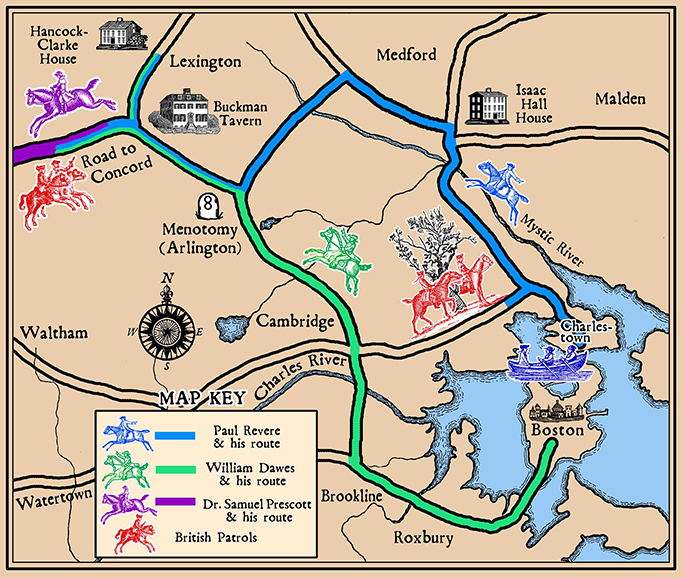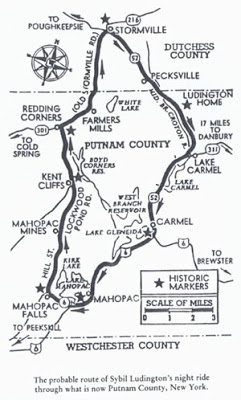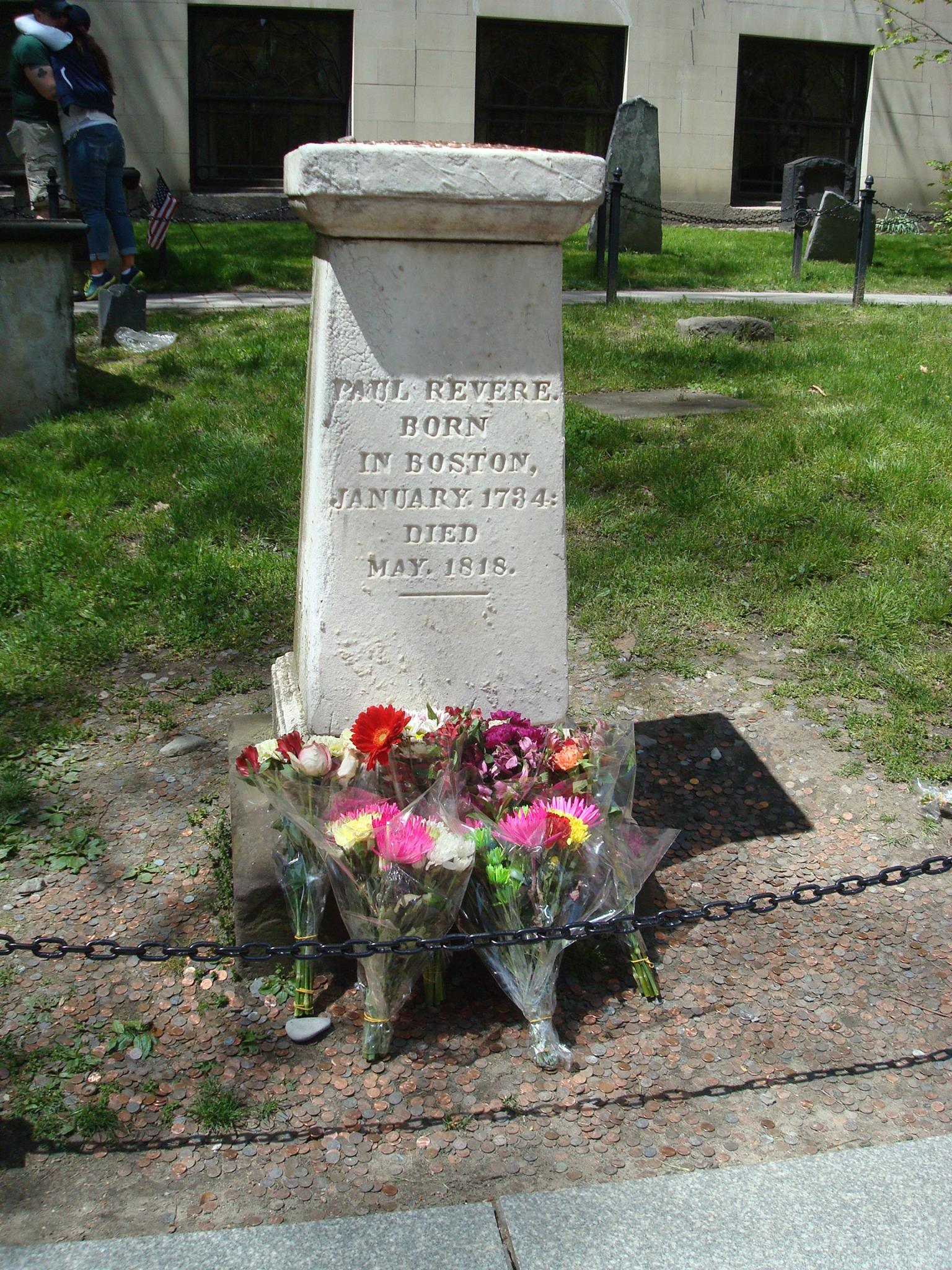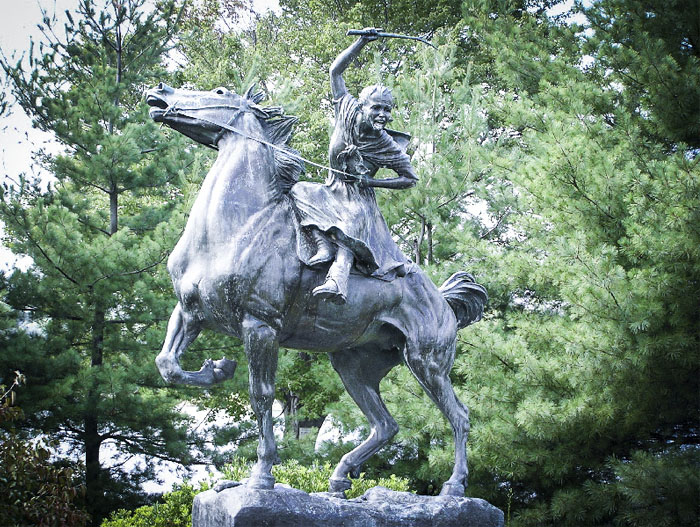On the night of April 18th 1775, Paul Revere rode through the night calling to the people of Boston that, “the British are coming!” Tension had been brewing between American colonists and their British overlords, and in April 1775 British troops moved to disrupt the recently formed ‘Massachusetts Provincial Congress’. Seeing the British arrive, Revere moved to protect the ‘rebel government’ and rode over twelve miles to alert the militia. The militia were thus alerted and met the British forces in what would be one of the first encounters of the American Revolutionary War.
On the night of April 26th 1777, two years after Revere’s ride, sixteen year old Sybil Ludington rode for forty miles informing the people of Putnam County that the British were attacking nearby Danbury. She returned, having roused four hundred soldiers who fought at the Battle of Ridgefield. Unlike Paul Revere, however, Ludington’s name has not gone down in history. The authenticity of her ride is called into question, and where it is accepted she is described invariably as ‘the female Paul Revere.’ Join me, dear reader, as we have a quick look into at the two rides and consider why a sixteen year old girl’s role in history questioned when a forty year old man’s role is not?
The answer has everything to do with historical documentation, sources and nothing to do with gender and age.
Lol jk. It’s gender and age.
Revere’s Ride vs Ludington’s Ride
Having been alerted that the British were coming and they didn’t look happy, Revere set off on his secret mission to rouse the militia throughout the area. He did not ride alone. He was accompanied by William Dawes, and along the way they picked up Samuel Prescott who was actually out for non-revolution related reasons. Even then, theirs was not an isolated ride. By the end of the night, there were around forty riders all following different routes, trying to avoid British patrols, alerting the county to the British movements.
Given that the British were already in the county, looking for rebels, Revere didn’t shout, ‘the British are coming,’ as folk history claims he did. Had he done so, he likely would have been caught way earlier than he actually was. The ride wasn’t the sole means of alerting the militia either. It was part of a larger system whereby the rider would alert a town and they would then raise the alarm themselves in a variety of ways, which ensured that the message was carried further than a rider could be expected to ride.
In his analysis of the ride, Derek Beck concludes that Revere’s mission lasted from ten pm to his capture at one fifty am the following morning, with only a small fraction of that actually spent on horseback. The weather was mild (which will become relevant later and isn’t simply the tendency of my people to resort to discussing the weather at every opportunity).
Revere, Dawes and Prescott were stopped by a British patrol between Lexington and Concord. Revere was the only one to be captured as Dawes and Prescott escaped, with Prescott the only one to actually make it to Concord.
Two years later, Sybil Ludington would undertake her ride. Her father, Colonel Henry Ludington was the commander of the local militia, and on the night of April 26th 1777, an exhausted messenger arrived bearing the news that the British were moving to burn a supply depot at Danbury. The messenger was in no state to muster men, so Ludington’s sixteen year old daughter, Sybil, volunteered to make the rounds. She took her horse and rode forty miles through a stormy night (I told you the weather was significant to the comparison). Armed only with a stick, she roused four hundred men. The militia were too late to protect the depot at Danbury but their resulting manoeuvres scored them a strategic victory over the British if not a tactical one.
Sybil returned home, soaked and exhausted and several sources refer to a visit shortly afterwards by George Washington who congratulated her on her success and contribution.
The Veracity of the Riders
The story of Paul Revere’s ride is practically a folk legend, whereas Sybil Ludington’s has been called into question. There are doubts as to whether Sybil was a real person (she was) and whether she did actually make the ride. If we accept that she did, details such as the name of her horse (Star), or whether she had a stick or not are accused of being fictional embellishments.
Critics claim that there are no contemporary sources that make mention of the ride. There aren’t any written records that refer to it and the oral history is considered unreliable. Sybil’s story didn’t appear in any contemporary Revolutionary histories. The earliest mention of Sybil’s ride appears in Martha J. Lamb’s History of the City of New York: Its Origin, Rise and Progress in 1880, forty years after Sybil’s death. A biography of Sybil’s father produced by her descendants in 1907 is considered unreliable because it only devotes two of three hundred pages to the ride. However, letters describing George Washington’s visit to Sybil’s house did exist. At least until they were lost in 1930. Contemporary writers refer to the visit, which would have been a bit odd if Sybil hadn’t done anything worthy of congratulations.
It also isn’t mentioned on her grave, which is apparently the final nail in the possibly fictional coffin.
Paul Revere’s ride by contrast was well documented by contemporaries.
Oh wait. No, it wasn’t.
Revere’s was one of many riders dispatched for the specific purpose of mustering forces. There is no mention of him in contemporary accounts of the battle or the dispatches. His ride didn’t appear in the public eye until 1861 when the poem Paul Revere’s Ride was published. This was forty years after Revere’s death (why does that sound familiar?). When he died, his ride wasn’t mentioned in his obituaries and if we look at his grave…
Oh look, it’s not mentioned there either.
In short, many of the criticisms regarding the veracity of Sybil’s ride could be levelled at Revere’s ride. Could be. But aren’t.
Questionable details such as the name of Sybil’s horse and whether or not she carried a stick are considered reasonable enough points to discredit the entire story. But for many years historians relied on a historically inaccurate poem, specifically designed to portray Revere as a folk hero, as the primary source material.
Another criticism of Sybil’s ride is that it wasn’t mentioned by women gathering contemporary stories of other women’s courage in the aftermath of the Revolution. But that suggests they published the story of every notable woman during the Revolution to such an extent that anyone not included didn’t exist. The women curating such collections would have been white and middle class and may well have deemed Sybil an unsuitable hero because of her age. In the narrative of heroes women of a certain age, class, and colour are often the first sacrifices at the altar of history. It’s a tragedy that persists today. Rosa Parks is a household name but few know of Claudette Colvin.
A female Paul Revere?
How far can Sybil Ludington be described as a female Paul Revere? If we accept that both made impressive rides and mustered forces then it’s still a bit of a stretch. Ludington rode further than Revere, alone, in worse conditions, mustering considerably more men, when she was still a child. She also didn’t get captured by the British which is a definite point in her favour.
Even if we take Sybil out of the equation, Revere wasn’t the rider who made the greatest contribution during his ride. Israel Bissell managed to elude capture and rode almost three hundred and fifty miles, exhausting two horses over four days. The midnight ride wasn’t even the most impressive ride of Revere’s career. In December 1774, four months before the events at Lexington and Concord, Revere was involved in ‘The Portsmouth Alarm’ which saw him ride forty miles in freezing conditions. The road had frozen, thawed and frozen again which made conditions treacherous but Revere succeeded and mustered up to four hundred troops. Had his midnight ride not been made into a poem many years after the event, it’s unlikely we would have known of it at all.
All of this is nothing however compared to the most obvious fact. That no matter how similar the two endeavours might be, Sybil Ludington isn’t a female Paul Revere. Her achievements and story are her own, they aren’t defined by a man doing something similar before her, especially when she far outdid him anyway.
If you’d like to join me for more fun and games in picking apart history, and other behind the scene tangents, you can support me via my Patreon.


















